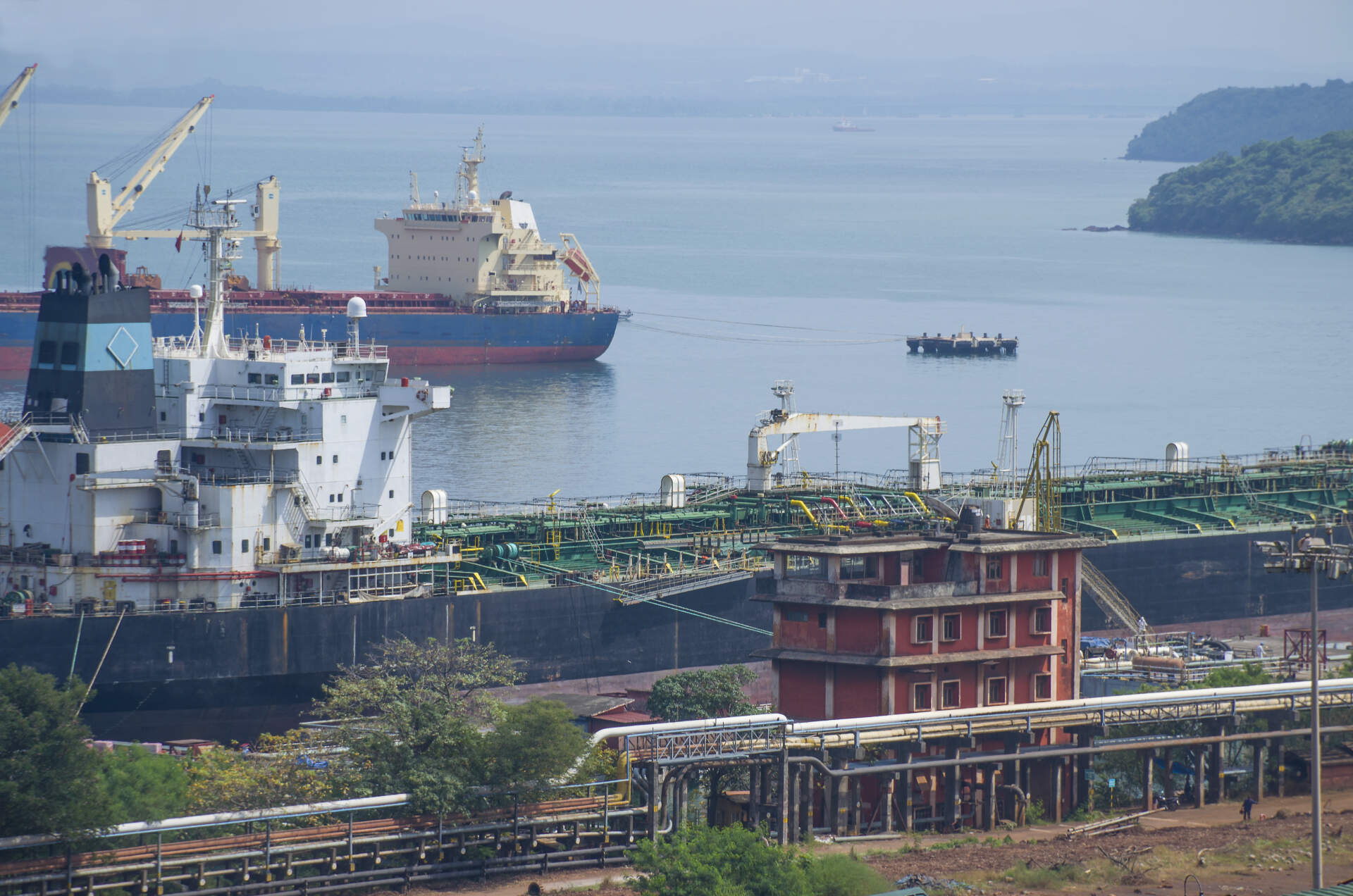
Mormugao Harbour in Goa, India
Canada’s merchandise trade surplus grew from $231 million to $1.9 billion in April, according to numbers released by Statistics Canada.1 Exports were up 2.5%, while imports dipped 0.2%.
Exports Grow After Two Months of Declines
The 2.5% increase in exports came on the heels of two months of declines. In real or volume terms, exports were up 2.8%. In fact, the $64.8 billion export total represents a new all-time high, finally surpassing pre-Covid levels.
Which categories were up? Metal and non-metallic minerals (+13.6%) were the biggest contributor. Gold was transferred from Canadian financial institutions to US ones as our neighbors to the south sought refuge from financial uncertainty. The gold traded at both higher volumes and higher prices, leading to a 46% increase.
Energy exports were also up, 6.4% in total. Crude oil exports grew 7.1%, reversing a trend that saw six consecutive months of decline. Coal exports to South Korea increased as well.
Supply chain and transportation issues are improving, and this was a factor in a 7.5% climb in motor vehicles and parts. In fact, this category was up 16.2% year over year.
Imports Down Slightly
Imports were down 0.2%, a third consecutive monthly decline. They dipped 1% in real or volume terms.
Energy products were the biggest factor here, down 12.8% on the month. Crude oil imports were down 20.5%, while refined oil imports shrunk by 11.7%.
The import of consumer goods, on the other hand, were up 4%. This can be attributed to a 27.1% increase in the import of active pharmaceutical ingredients from Ireland. These imports are for the production of medications in Canada, which has been causing volitility in this particular product category since February.
Surplus with US, Deficit with Rest of World Both Grow
The higher exports of gold were largely responsible for a 4.4% increase in exports to the United States in April. Imports from the US were down 0.4%, and as a result, Canada surplus with the US widened from $7.2 billion to $9.5 billion.
Our merchandise trade deficit with countries other than the US also grew, widening by a half a billion dollars to $7.5 billion. Exports in this category fell 3.1% while imports widened by 0.3%.
Diplomatic Tensions with China Affecting Trade?
As Canada experiences diplomatic tensions with China, some importers are reconsidering their reliance upon the nation.
“I am sensing that sourcing out of China is becoming a little more complex,” says Canadian Alliance President William McKinnon.2
Does McKinnon expect CA clients to stop doing business with Chinese companies?
“I believe we’ll get a better sense in August and September, based on what our customers are bringing to the market for Christmas,” he says. Despite the uncertainty, McKinnon doesn’t expect change to take place overnight “I believe that our customers who rely heavily on sourcing out of China will continue to source from wherever they need to in order to get what they need.”
More Business with India?
A recent visit to Canada from India’s Commerce and Industry Minister Piyush Goyal has led to renewed hopes that the two nations may reach a trade deal.3 With Canada’s ties to China in question, McKinnon believes that more trade with India may be in store.
“I think that India has the potential to be the winner in this,” he says. “Right now we get very little product from India, but I think it’s going to happen. I think we’ll start to see shoes, fashion, small appliances, and consumer goods.”
Roberts Bank Delta Port Terminal Expansion to Take Time
The approval of the Roberts Bank Terminal 2 project has many in the industry excited about future capacity increases. While McKinnon shares this enthusiasm, he believes that there’s little that his clients can do to incorporate it into short-term plans.
“There’s road infrastructure and terminal infrastructure to be added,” he says. “I’m hearing speculation that it will be five to seven years before it’s operational.”
A contentious aspect of the expansion has been the degree to which automation may be employed. While McKinnon notes the level of pushback, he believes that increased reliance upon automation is inevitable.
“It’s the only way you can compete globally,” he says. “You have to be able to say that you can process a container through the port for X amount of dollars in a certain amount of time.”
Shipping Prices Have Stabilized
As CA has reported in the past, shipping prices have fluctuated and inflated wildly in recent years. McKinnon believes that the worst of this is over.
“Capacity has freed up a lot, and it’s pretty much back to normal,” he notes. “The shipping lines have had their run, earning record profits, but it’s becoming a buyer’s market again.”
Activity Level Strong
McKinnon notes that activity levels at the Canadian Alliance facility remain strong. “We’ve seen growth, with some key customers coming on board,” he says. “We’ve increased our capacity, adding about 5,000 positions. I’m confident we’ll have that space sold out within the next 90 days.”
Cited Sources
1 Government of Canada, Statistics Canada. “Canadian International Merchandise Trade, April 2023.” The Daily – , June 7, 2023. https://www150.statcan.gc.ca/n1/daily-quotidien/230607/dq230607a-eng.htm.
2 Personal communication with William McKinnon
3 Why Canada and India might finally sign a trade agreement – Financial Post. https://financialpost.com/news/economy/why-canada-india-might-finally-sign-trade-agreement.
